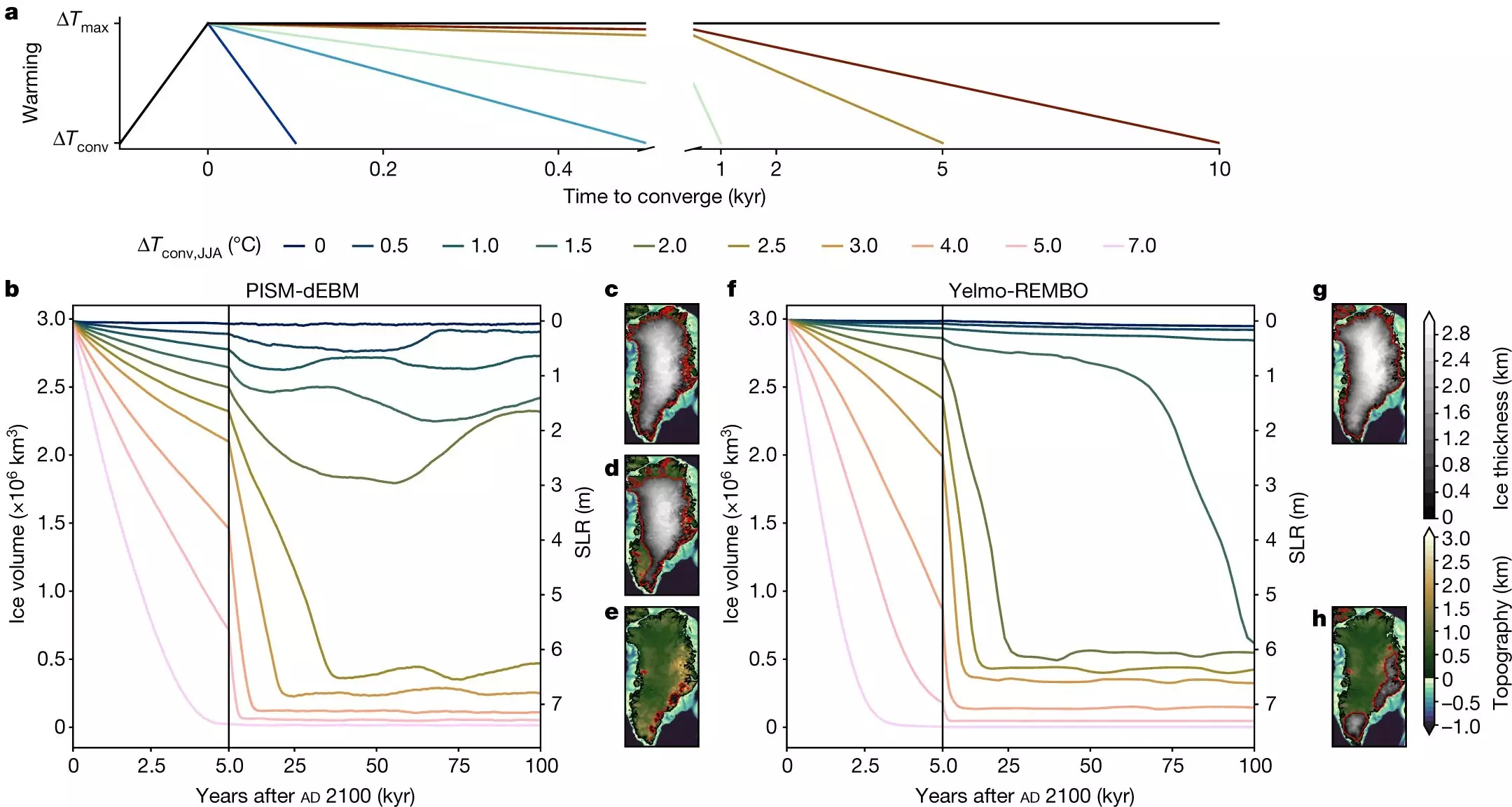The Greenland ice sheet, the second largest ice-covered surface on Earth, is in grave danger due to the effects of climate change. The melting of this ice sheet could lead to a catastrophic sea-level rise, threatening coastal regions and the people who reside there. Scientists have long believed that if a critical temperature threshold is exceeded, the Greenland ice sheet would be lost forever. However, a recent international research study has provided a glimmer of hope, suggesting that there might be a way to reverse the damage even after surpassing this tipping point.
Led by Professor Niklas Boers, an expert in Earth System Modeling, a team of scientists from the Potsdam Institute for Climate Impact Research and other esteemed institutions have conducted a series of simulations to investigate the fate of the Greenland ice sheet. Contrary to previous assumptions, their findings reveal that temporary exceedance of the tipping point does not necessarily lead to irreversible damage. Instead, it is possible to halt and potentially reverse the melting process with massive countermeasures.
Recovery of the Greenland Ice Sheet
To assess the potential recovery of the ice sheet, the researchers utilized two distinct ice sheet models. Through an extensive range of scenarios, spanning global warming levels from 1.5 to 6.5 degrees Celsius by 2100, they examined the subsequent cooling phase that could last anywhere from 100 to 10,000 years. The simulations demonstrated that as long as the critical temperature threshold is only exceeded for a limited period of several centuries, the Greenland ice sheet can recover.
The Crucial Role of Timely Action
The key factor in the ice sheet’s recovery lies in promptly correcting the Earth’s temperature within a timeframe of approximately 500 years. The longer the tipping point is surpassed and the higher the temperature rises during that period, the more drastic, costly, and challenging the required countermeasures will be. These countermeasures include significant reductions in atmospheric CO2 concentrations globally, wide-scale reforestation and afforestation efforts, and the implementation of carbon capture and storage technologies. Notably, the severity of these measures can be lessened if global warming remains slightly above the targets outlined in the Paris Climate Accord.
Although the research presents a hopeful perspective, it should not diminish the urgency for stronger climate protection initiatives. Instead, the findings should serve as a call to action and a reminder of the potential for averting irreversible damage. The simulations conducted allow for a comprehensive understanding of the delicate balance of the Greenland ice sheet and emphasize the importance of staying below the critical temperature threshold. The pursuit of this objective is essential for preserving the environmental stability of our planet and safeguarding the future of generations to come.
A Future with Hope
In the face of uncertain climate change outcomes, the possibility of a second chance for the Greenland ice sheet offers a glimmer of hope. Humanity must recognize the importance of immediate and drastic action to reduce greenhouse gas emissions and limit global warming. Investments in renewable energy, increased energy efficiency, and sustainable practices on a global scale are imperative. By heeding the lessons from this research, we can still strive towards a future where the Greenland ice sheet remains intact and the world is spared from the devastating consequences of sea-level rise.
A Call to Reimagine Our Relationship with the Planet
The findings from this study serve as a reminder of the interconnectedness of our actions and the environment. As stewards of the Earth, we must reevaluate our relationship with the planet and prioritize sustainable practices. This goes beyond simply meeting climate goals; it requires a fundamental shift in our individual and collective behaviors towards more eco-conscious choices. From reducing our carbon footprint to advocating for policy changes, each person has a role to play in ensuring the long-term viability of our planet.
With the ability to recover the Greenland ice sheet even after surpassing the tipping point, there is a newfound sense of hope. However, this hope must not lull us into complacency. The urgency to address climate change has never been greater, and the time for action is now. As we strive to tackle the profound challenges posed by climate change, let us embrace the opportunity presented by this research to forge a path towards a sustainable and resilient future. Together, we can safeguard the Greenland ice sheet and, in turn, protect the delicate balance of our planet.


Leave a Reply